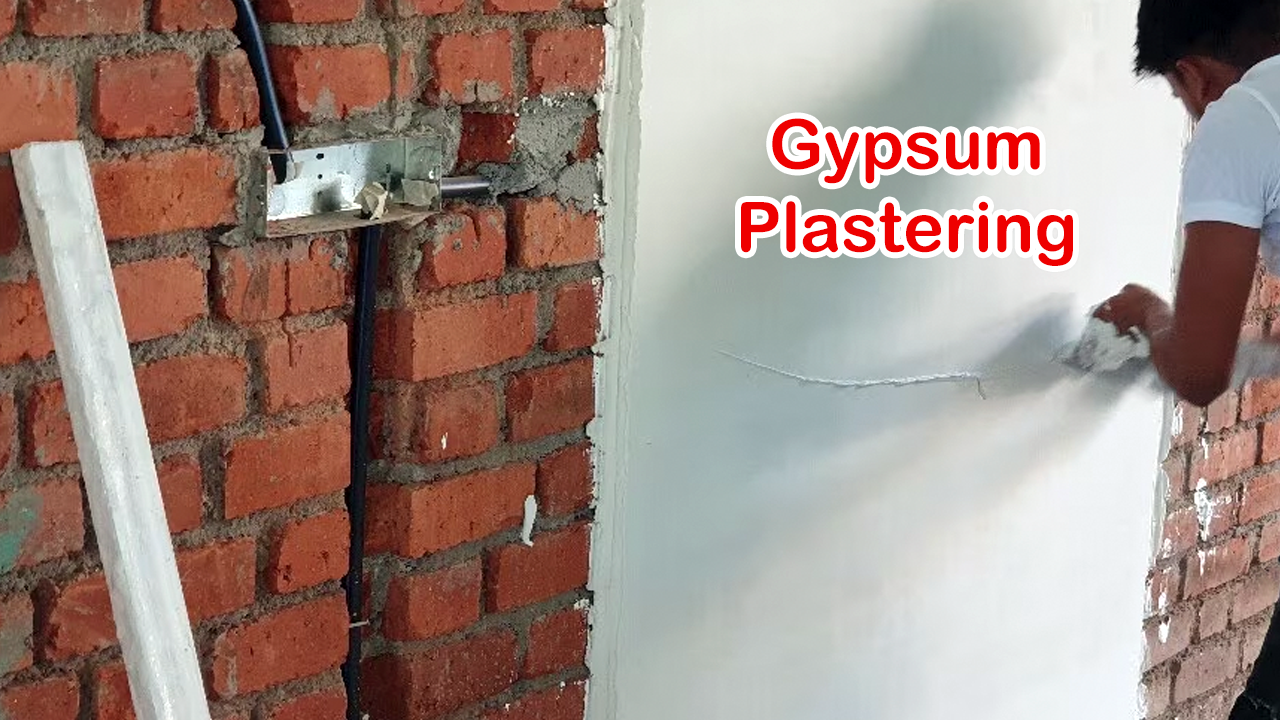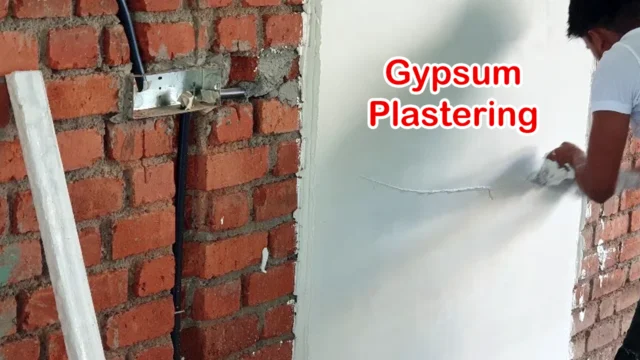Gypsum plaster, additionally referred to as plaster of Paris, is a famous material used for interior wall finishing. It has numerous blessings and disadvantages, which might be crucial to don’t forget before choosing it for a particular utility.

Advantages of Gypsum Plaster:
Smooth Finish: Gypsum plaster gives a smooth and level floor, making it ideal for indoors walls. This clean finish is suitable for painting or wallpapering.
Quick Setting Time: Gypsum plaster has a rather quick placing time compared to standard cement plaster. This permits for quicker finishing touch of projects.
Lightweight: Gypsum plaster is lighter than conventional cement plaster, making it simpler to deal with and follow. This can make a contribution to quicker and more green creation.
Fire Resistance: Gypsum is naturally fireplace-resistant, making gypsum plaster a more secure preference for interior programs.
Low Shrinkage: Gypsum plaster exhibits low shrinkage during the drying process, lowering the chance of cracks forming on the finished floor.
Good Thermal Insulation: Gypsum has good thermal insulation houses, which could help adjust indoor temperatures.
Disadvantages of Gypsum Plaster:
Moisture Sensitivity: Gypsum plaster is touchy to moisture, and extended exposure to water can purpose it to degrade. This makes it fallacious for exterior programs or areas prone to dampness.
Brittle Nature: Gypsum plaster is especially brittle compared to other plaster kinds. It may be extra susceptible to cracking upon effect.
Limited Load-Bearing Capacity: Gypsum plaster has a confined load-bearing potential as compared to conventional cement plaster. It may not be appropriate for regions subjected to heavy structural hundreds.
Not Suitable for Wet Areas: Due to its moisture sensitivity, gypsum plaster isn’t encouraged for wet regions including bathrooms or kitchens, wherein constant publicity to water is predicted.
Cost: Gypsum plaster may be greater luxurious than traditional cement plaster, that could effect the general price of a creation undertaking.
Requires Skilled Application: Achieving a high-quality end with gypsum plaster calls for talent and experience. Improper software may additionally result in an uneven surface.
In precis, gypsum plaster gives a smooth end, short placing time, and hearth resistance, but it is touchy to moisture, has limited load-bearing capability, and may be more high-priced. Consider the unique necessities of your assignment and the characteristics of gypsum plaster earlier than choosing it as a wall completing fabric.

Advantages:
Ease of Application: Gypsum plaster is exceedingly clean to use, particularly in evaluation to some other plaster sorts. It may be carried out in layers and is commonly consumer-pleasant for skilled craftsmen.
Reduced Cracking: Gypsum plaster has a tendency to have lower shrinkage and is much less liable to cracking in comparison to a few traditional cement plasters. This can result in a extra long lasting and aesthetically eye-catching end.
Versatility: Gypsum plaster can be implemented to various surfaces including brick, block, concrete, and drywall, making it a versatile option for interior wall completing.
Good Adhesion: Gypsum plaster has good adhesion residences, which helps it bond properly with specific forms of substrates.
Disadvantages:
Limited Load-Bearing Strength: Gypsum plaster isn’t as strong as cement plaster, so it could not be suitable for areas that require excessive effect resistance or in which heavy items are frequently treated.
Not Suitable for Exterior Use: Gypsum plaster isn’t advocated for exterior packages because it may go to pot while uncovered to the elements. It is nice appropriate for interior walls in controlled environments.
Setting Time Challenges: While gypsum plaster commonly has a short putting time, this may be a disadvantage if the software technique isn’t always completed unexpectedly. Premature putting may additionally bring about a much less-than-perfect finish.
Cost Comparisons: While gypsum plaster has positive benefits, it could be greater expensive than some other plastering materials. Contractors and builders need to weigh the benefits in opposition to the cost to determine its suitability for a particular project.
Environmental Impact: The production of gypsum includes mining, which can have environmental implications. Additionally, the manufacturing manner may also make a contribution to carbon emissions.
Surface Vulnerability: The easy end of gypsum plaster can be liable to scratches and dents, particularly in excessive-site visitors areas or places in which there is a danger of effect.
It’s critical to word that the suitability of gypsum plaster relies upon on the unique requirements of the venture, the environmental situations, and the talent of the applicator. Consulting with a production professional and thinking about the precise wishes of the software is essential while selecting plastering materials.
Sound Insulation: Gypsum plaster has some inherent sound-insulating houses, that may contribute to a quieter indoor surroundings with the aid of absorbing and dampening sound.
Non-Toxic and Environmentally Friendly: Gypsum plaster is non-poisonous and does not emit harmful materials, making it a more secure and extra environmentally friendly choice in comparison to some different building materials.
Disadvantages:
Complex Repairs: If gypsum plaster is damaged, repairing it may be extra complicated than repairing a few different kinds of plaster. Achieving a continuing repair may additionally require knowledge.
Limited Load Resistance: While gypsum plaster is suitable for common wall programs, it may no longer be the fine preference for regions that want to assist heavy fixtures or equipment, because it has barriers in load-bearing ability.
Limited Exterior Durability: Even in protected or shaded regions, gypsum plaster used on exteriors may additionally go to pot through the years due to exposure to moisture and climate conditions.
Not Ideal for High-Humidity Areas: While gypsum plaster is appropriate for many indoors areas, it can not be the best preference for high-humidity environments, including swimming pool areas, wherein moisture resistance is critical.
Compatibility with Some Finishes: Certain sorts of finishes, consisting of textured or stucco finishes, can be more difficult to acquire with gypsum plaster compared to other plastering substances.
Setting Time Variation: The placing time of gypsum plaster can vary based totally on elements including temperature and humidity. This variability might also require careful monitoring throughout utility. Read also: Know more about AAC (Autoclaved Aerated Concrete) blocks
Transportation Challenges: Gypsum plaster, being tremendously fragile, may be liable to damage for the duration of transportation and handling. This calls for cautious handling to prevent breakage before software.
Limited Load-Bearing Capacity: Gypsum plaster has limited load-bearing potential, which means it could now not be appropriate for regions where heavy objects or system need to be established at once at the walls.
As with any creation cloth, it is crucial to thoroughly investigate the specific needs of a challenge, the environmental situations, and the supposed use of the space when deciding whether or not gypsum plaster is the most appropriate option. Consulting with construction specialists and thinking about lengthy-time period sturdiness and upkeep necessities can assist make knowledgeable choices.









